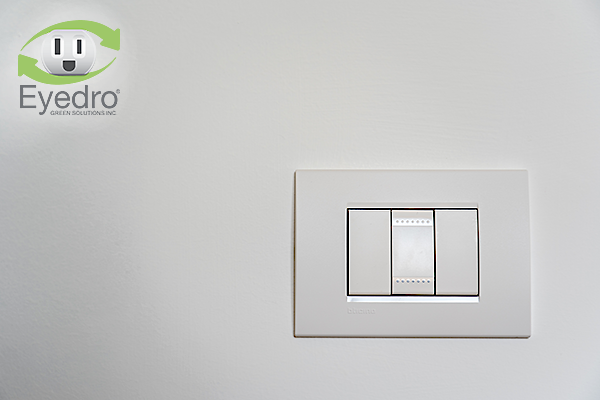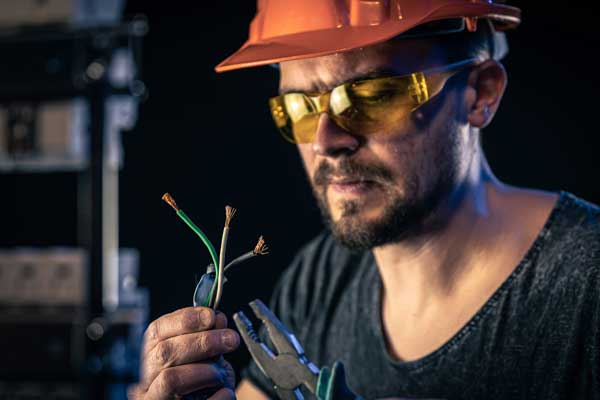How Your Home Electrical System Works
In people’s houses, electricity is one of the essential resources. It controls the lighting, heating, and cooling systems and charges the necessary mobile phones. Understanding how your home electrical system works is vital if anything goes wrong or if you, as a homeowner want to make improvements. With so many intricate and critical components, residential electrical work is best left to skilled specialists who know how to install, repair and maintain electrical equipment safely and efficiently.
Everyone uses energy in their homes daily, but how does it arrive, and how is it distributed? To work effectively, electricity must always complete a circuit.
Electricity travels from one 120-volt wire to a neutral wire that is grounded. A defect in the cables leading to and from these spots could disrupt the flow of electricity and create a malfunction in one of your circuits.
Knowing how electricity enters your property, how it is linked, and how it is dispersed will assist you in isolating potential issues.
Service Access
The transformer is fed by the utility company’s overhead service wires to reduce the voltage for your residence. It is then transported to the weatherhead (service head), linked to a conduit leading to the meter box. Pipe and wire weight is supported by anchor bolts and straps connected to this system.
Two 120-volt cables and a grounded neutral wire feed the meter through the weather head. The utility provider is responsible for providing electricity to the meter, after which the homeowner assumes responsibility.
The service from the utility provider to the meter is always active until a technician physically disconnects it. If there seems to be a problem on their meter side, don’t hesitate to contact the utility provider to resolve the issue. They have specialized tools for such repairs. Never try to work on the other party’s side of the meter!
Residential Electrical System Operation
The overhead service line will enter the weatherhead and then go to the meter via the conduit. The subterranean kind is brought to the meter via a pipe from its buried position.
After leaving the meter, the wire enters the home’s breaker box. This is often referred to as the service panel or service. Within the breaker box, the energy is distributed to smaller lines that go to different areas of the residence. Some may flow to a subpanel, which provides additional circuits for various home services.
Inside the service panel, each smaller line is provided with a circuit breaker. This is a particular sort of switch that disconnects immediately if anything tries to consume more power than it can manage. Following the circuit breaker, energy passes via the home’s wiring to the areas where it will be used.
Wiring transports electricity to the home’s appliances and electrical boxes. These are equipped with either switches, outlets, or junctions. Junctions are sites where electricity is routed in two or more separate directions, ultimately terminating in a plug or switch. This is where the user plugs something in or switches something on to activate the system.
Metering
The electric meter is often located on the side of your home and is linked to the service entry pipe. It may also be hooked to the utility company’s utility pole. It may be supplied from above or below ground.
A meter is a watt-measuring gadget provided by the utility provider to monitor monthly energy usage. You can also monitor your electricity usage in real-time with a home energy monitor. There are analog meters with numbered dials like a watch and modern digital meters that may be read remotely from the headquarters of the electric provider.
The electrical service panel is the principal distribution point for supplying power to the home’s switches, outlets, and appliances. The service panel, located near the electric meter, is fitted with breakers or fuses that cut power to the circuits in the event of an electrical system breakdown.
Wires are used to link an electrical system to the earth through grounding. Grounding provides vital protection against electric shock and electrocution by providing a third channel for carrying energy in the case of a short circuit or overload utilizing a grounding rod. Grounding will assist in safeguarding the individual working on the system, the system itself, and any connected appliances and equipment.
If you are uncomfortable working on your home’s electrical system, you should not hesitate to contact a professional. However, if your system is experiencing issues, you may be able to determine the reason readily and do minor repairs.
– Maggie Bloom, Guest Writer

